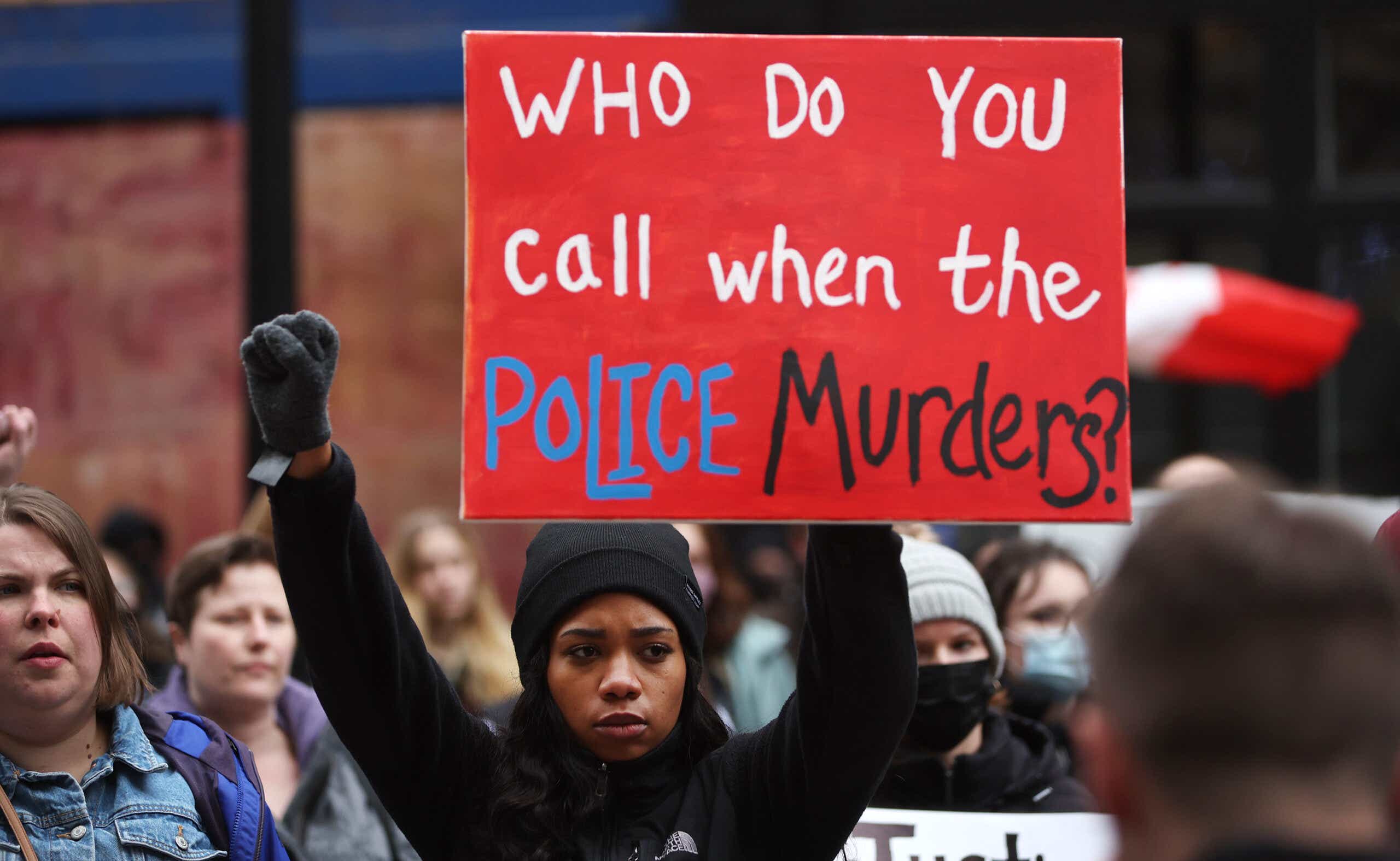On April 4, a white police officer shot and killed a Black man, Patrick Lyoya, during a traffic stop in Grand Rapids, Michigan. On Tuesday, an independent autopsy showed that Lyoya, who was unarmed, was shot in the back of the head. The 26-year-old was facedown on the ground at the time.
At a press conference last week, the Grand Rapids police chief, Eric Winstrom, noted that “Lyoya was shot in the head” but didn’t comment in more detail, saying: “That’s the only information I have.”
The officer in question is yet to be named, prompting questions as to whether he has a record of violence, and why his bodycam failed to capture the fatal event. His continued anonymity is fueling increased outrage over police brutality.
“Today, based on scientific evidence, we can confirm that Patrick Lyoya was shot in the back of the head … [in] what his family believes was an execution,” prominent civil rights attorney Ben Crump, who’s representing Lyoya’s family, said per The Guardian.
“This independent autopsy report confirms what we all witnessed in the horrifying video footage: Unarmed Patrick Lyoya was conscious until the bullet entered his head, instantly ending what could have been a long and fruitful life,” he added.
What happened on April 4?
The autopsy lines up with video of the incident released to the public.
After the initial stop, the officer could be heard saying the car’s license plate wasn’t registered to the vehicle. Bodycam footage shows Lyoya’s attempt to run away and a struggle as the officer repeatedly tells him to stop.
Lyoya struggled with the officer on the ground, and the officer could be heard on video ordering Lyoya tp remove his hand from a police Taser.
The close-up video goes dark 42 seconds before the officer shoots Lyoya dead. The shooting was recorded on a phone by Lyoya’s car passenger, and a nearby doorbell camera.
“Keep videoing the police because transparency is important for them and it’s sure important for us,” said Crump per The Independent.
During a press conference last week, Lyoya’s father, Peter Lyoya, said: “At the time when I saw this video, my heart was really, deeply broken. Right now, I’m seeing that I have no life, my life has come to an end. My life was Patrick, my son.
“I’m asking for justice,” he added.
Crump made the family’s aims clear, saying: “We demand that the officer who killed Patrick not only be terminated for his use of excessive and fatal force, but be arrested and prosecuted for the violent killing of Patrick Lyoya.”
Who was Patrick Lyoya?
Patrick Lyoya was a 26-year-old refugee from the Congo who, according to his autopsy, may have expected to live into his eighties were it not for the officer’s actions.
Lyoya arrived in the United States with his family in 2014, after enduring years of war and persecution in the Democratic Republic of Congo.
According to USA Today, they were living together in Malawi when they won asylum to live in the states and joined the growing number of refugees from Congo in Michigan. Thanks to employment opportunities and existing social connections like churches, Grand Rapids is home to the largest Congolese refugee population in the state.
“They told us that in America, there’s peace, there’s safety, you’re not going to see killing anymore, that it was basically a safe haven,” Patrick’s mother, Dorcas Lyoya, said in Congolese during an interview with the Detroit Free Press
Fueling fear
About 4.6 million, or one in 10, Black people living in America are immigrants, according to a January report from Pew Research Center.
Although they only comprise 7% of the non-citizen population, a 2018 Black Alliance for Just Immigration report showed that Black immigrants make up 20% of deportations on criminal grounds.
Chris Cavanaugh, director of Samaritas’ New American Resettlement program in West Michigan, told USA Today: “Certainly the Congolese community is feeling some fear, kind of scared over what happened and I would say rightfully so. Those maybe who have much less English skills are just more apprehensive about getting pulled over or how they’re supposed to respond in certain situations.”
Samaritas is reportedly hoping to support refugee communities in the wake of the recent tragedy by supporting them to access services in their native language including during interactions with law enforcement.
‘No progress’ since Floyd
Despite the widespread protests and publicity that followed the brutal public murder of George Floyd by police in 2020, police continue to kill people in America with terrifying regularity.
Data analysis from Mapping Police Violence reported in The Guardian shows that U.S. law enforcement had already killed 249 people in 2022 as of 24 March, averaging about three deaths a day. This alarming rate mirrors the staggering deadly force trends of recent years — and continues to disproportionately affect certain demographics.
According to a Lancet study published in late 2021, fatal police violence remains an urgent public health crisis in the U.S. The report, which looked at data covering 1980-2019, said that “mounting evidence” shows that deaths at the hands of the police “disproportionately impact people of certain races and ethnicities, pointing to systemic racism in policing.”
The report adds that ‘recent high-profile killings by police in the USA have prompted calls for more extensive and public data reporting on police violence.”
No consequences for police?
It’s little wonder that many officers appear to show zero restraint when it comes to the use of deadly force. Earlier this week, federal authorities in Chicago said that former officer Jason Van Dyke will not face federal charges in the 2014 murder of a Black teenager, citing the high bar the government would have to clear.
Van Dyke, the first Chicago officer to be convicted for an on-duty police shooting in half a century, spent just three years behind bars for Laquan McDonald’s death. He was convicted in Chicago in 2018 of second-degree murder and aggravated battery, and sentenced to 81 months in state prison. He served less than half that sentence.
Graphic dashcam video released a year after the killing showed Van Dyke shooting 17-year-old McDonald more than a dozen times as he walked away.
According to NPR, in a statement this week, U.S. Attorney John Lausch said his office would not file charges. He explained that the federal government would have to clear a high bar, and that there were fears another trial might depreciate “important results already achieved.”









